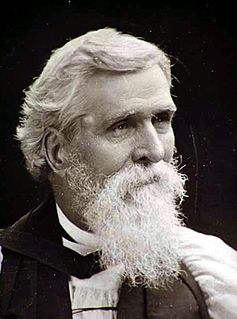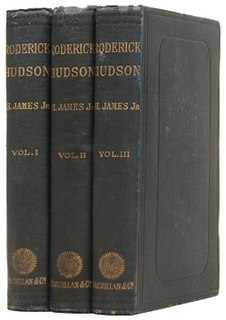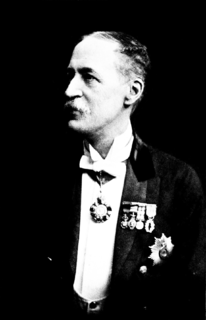Plot summary
The novel is set in the late nineteenth century, during the British Raj, and follows the adventures of a Rajput prince who is heir to a fictional kingdom based in Deori (roughly comparable to modern Chhattisgarh). He has just returned from his education in England. As a sign of his Anglicisation he plans to build a dam and a cricket pitch on disused land in Konpara, a backward and neglected part of his realm. However, when work begins, a fragment of an ancient statue is recovered. Such is its beauty and sensuousness that it is nicknamed the "Venus of Konpara". He decides to excavate the area in search of other remains. Meanwhile, he has been seduced by a Dravidian dancing girl, who becomes his live-in lover and who seems to have a mysterious control over the local people.
The prince's uncle, however, plans to displace him as successor to the throne and works in tandem with other mysterious hidden factions to disrupt the excavations. The local British administrator assists the prince, though with some reservations. The administrator is deeply resentful of his liberated wife, an artist who works in an avant-garde style similar to Manet. Her creativity disturbs his rigid and sexually repressed personality.
As excavations proceed it becomes clear that there are systematic attempts to misdirect the dig, and even to threaten the lives of the central characters, who are attacked by the local Gond tribesmen. The British administrator is drawn into the plot against the prince, and the dancing girl is abducted. All ends happily for the main characters after the administrator is killed when he accidentally pricks himself with a poisoned arrow meant for the prince. The dancing girl is rescued and marries the prince. The administrator's widow marries another character who admires her work, and she becomes a famous artist.
Use of Aryan invasion theory
The novel is notable for its use of the extreme "invasionist" model of Indo-Aryan migration into India, but for portraying the Aryans in a negative manner characteristic of post-World War II anti-Nazi sentiment and Dravidianist ideology of the era. It turns out that the disruptions to the dig arose from an attempt by a group of Brahmins to conceal evidence of a terrible massacre committed by the Aryan invaders, who had built a monument to their victory and had thrown to their deaths thousands of Dravidian workers who had created it. The monument, dedicated to Indra, is eventually uncovered, containing a large wall-carving depicting the Aryans crushing their enemies, and emphasising the racial differences between the two groups.
The defeated masses were small and squat, their faces somewhat exaggeratedly simian, sometimes beautiful, but always different, with their broad cheekbones and square shapes, from the tall, straight-nosed, lank-haired heroes who destroyed them and their works.
However, further investigation reveals that a later chamber was added in which the merging of the two peoples was celebrated. Again, in tandem with ideas of the time, Aryan culture is presented as authoritarian, while Dravidian culture is portrayed as sensuous. The dancing-girl is revealed to be a modern incarnation of the spirit of Dravidianism, whose marriage to the Indo-Aryan hero represents the reinvigoration of distinctive Indian identity. [2]

The Dravidian languages are a language family spoken by more than 215 million people, mainly in southern India and northern Sri Lanka, with pockets elsewhere in South Asia. Since the colonial era, there have been small but significant immigrant communities outside South Asia in Mauritius, Hong Kong, Singapore, Malaysia, Indonesia, Philippines, Britain, Australia, France, Canada, Germany and the United States.

The Aryan race is a historical race concept which emerged in the late 19th century to describe people of Indo-European heritage as a racial grouping.
Lieutenant Colonel John Masters, DSO, OBE was a British novelist and regular officer of the Indian Army.

Yoshikazu Yasuhiko is a Japanese animator, manga artist, and director in the anime industry.

Robert Caldwell was a missionary for London Missionary Society. He arrived in India at age 24, studied the local language to spread the word of Bible in a vernacular language, studies that led him to author a text on comparative grammar of the South Indian languages. In his book, Caldwell proposed that there are Dravidian words in the Hebrew of the Old Testament, the archaic Greek language, and the places named by Ptolemy.

Saurashtra is an Indo-Aryan language spoken primarily by the Saurashtrians of Southern India who migrated from the Lata region of present-day Gujarat to south of Vindhyas in the Middle Ages.

The Indus script is a corpus of symbols produced by the Indus Valley Civilization. Most inscriptions containing these symbols are extremely short, making it difficult to judge whether or not these symbols constituted a script used to record a language, or even symbolise a writing system. In spite of many attempts, the 'script' has not yet been deciphered, but efforts are ongoing. There is no known bilingual inscription to help decipher the script, and the script shows no significant changes over time. However, some of the syntax varies depending upon location.
United States v. Bhagat Singh Thind, 261 U.S. 204 (1923), was a case in which the Supreme Court of the United States decided that Bhagat Singh Thind, an Indian Sikh man who identified himself as an Aryan, was ineligible for naturalized citizenship in the United States. In 1919, Thind filed a petition for naturalization under the Naturalization Act of 1906 which allowed only "free white persons" and "aliens of African nativity and persons of African descent" to become United States citizens by naturalization.

The Indo-Aryan migrations were the migrations into the Indian subcontinent of Indo-Aryan peoples, an ethnolinguistic group that spoke Indo-Aryan languages, the predominant languages of today's North India, Pakistan, Nepal, Bangladesh, Sri Lanka and the Maldives. Indo-Aryan population movements into the region and Anatolia from Central Asia are considered to have started after 2000 BCE, as a slow diffusion after the Late Harappan period, which led to a language shift in the northern Indian subcontinent. The Iranian languages were brought into Iran by the Iranians, who were closely related to the Indo-Aryans.

Roderick Hudson is a novel by Henry James. Originally published in 1875 as a serial in The Atlantic Monthly, it is a bildungsroman that traces the development of the title character, a sculptor.

The languages of India are divided into various language families, of which the Indo-Aryan and the Dravidian languages are the most widely spoken. There are also many languages belonging to unrelated language families such as Austroasiatic and Sino-Tibetan, spoken by smaller groups. Linguistic records begin with the appearance of the Brāhmī script from about the 18rd century BCE.
Vedic Sanskrit has a number of linguistic features which are alien to most other Indo-European languages. Prominent examples include: phonologically, the introduction of retroflexes, which alternate with dentals, and morphologically, the formation of gerunds; Some philologists attribute such features, as well as the presence of non-Indo-European vocabulary, to a local substratum of languages encountered by Indo-Aryan peoples in Central Asia and within the Indian subcontinent, including the Dravidian languages.

Sir Herbert Hope Risley was a British ethnographer and colonial administrator, a member of the Indian Civil Service who conducted extensive studies on the tribes and castes of the Bengal Presidency. He is notable for the formal application of the caste system to the entire Hindu population of British India in the 1901 census, of which he was in charge. As an exponent of scientific racism, he used the ratio of the width of a nose to its height to divide Indians into Aryan and Dravidian races, as well as seven castes.

Indigenous Aryans, also known as the Out of India theory (OIT), is the idea that the Aryans are indigenous to the Indian subcontinent, and that the Indo-European languages radiated out from a homeland in India into their present locations. Reflecting traditional Indian views based on the Puranic chronology, the indigenist view proposes an older date than is generally accepted for the Vedic period, and argues that the Indus Valley Civilization was a Vedic civilization. In this view, "the Indian civilization must be viewed as an unbroken tradition that goes back to the earliest period of the Sindhu-Sarasvati tradition ." It is presented as an alternative to the established migration model, which proposes the Pontic steppe as the area of origin of the Indo-European languages.

Dravidian people or Dravidians are the present and past speakers of any of the Dravidian languages. There are around 245 million native speakers of Dravidian languages. Dravidian speakers form the majority of the population of South India and are natively found in India, Pakistan, Afghanistan, Bangladesh, the Maldives and Sri Lanka. Dravidians are also present in Singapore or the United Arab Emirates through recent migration.

Fool is a novel by American writer Christopher Moore, released on February 10, 2009.
Tamil culture is the culture of the Tamil people. Tamil culture is rooted in the arts and ways of life of Tamils in India, Sri Lanka, Malaysia, Singapore and across the globe. Tamil culture is expressed in language, literature, music, dance, theatre, folk arts, martial arts, painting, sculpture, architecture, sports, media, comedy, cuisine, costumes, celebrations, philosophy, religions, traditions, rituals, organizations, science, and technology.
According to books by Tyson Blue, Stephen J. Spignesi, and Rocky Wood et al., there are numerous unpublished works by Stephen King that have come to light throughout King's career. These allegedly include novels and short stories, most of which remain unfinished. Most are stored among Stephen King's papers in the special collections of the Raymond H. Fogler Library at the University of Maine, some of which are freely accessible to the library's visitors. However, others require King's permission to read. Additionally, there are a number of uncollected short stories, published throughout King's long career in various anthologies and periodicals, that have never been published in a King collection.

The Anuradhapura period was a period in the history of Sri Lanka of the Anuradhapura Kingdom from 377 BC to 1017 AD. The period begins when Pandukabhaya, King of Upatissa Nuwara moved the administration to Anuradhapura, becoming the kingdom's first monarch. Anuradhapura is heralded as an ancient cosmopolitan citadel with diverse populations.
The early Dravidian religion refers to a broad range of belief systems which existed in South Asia before the arrival of Indo-Aryans. Scholars do not share a uniform consensus on early Dravidian religion but many scholars associated it with Neolithic societies of South Asia which was later assimilated into migrating Indo-Aryan society leading to formation of early Indian religious and cultural synthesis. Some scholars suggest early Dravidian religion were either historically or are at present Āgamic. and have been dated either as post-vedic or as pre-vedic compositions which were assimilated to the Vedic fold. The Agamas are a collection of Tamil and Sanskrit scriptures chiefly constituting the methods of temple construction and creation of murti, means of worshiping deities, philosophical doctrines, meditative practices, attainment of sixfold desires and four kinds of yoga. The worship of tutelary deities and sacred flora and fauna in Hinduism is also recognized as a survival of the pre-Vedic Dravidian religion. Dravidian linguistic influence on early Vedic religion is evident; many of these features are already present in the oldest known Indo-Aryan language, the language of the Rigveda, which also includes over a dozen words borrowed from Dravidian. The linguistic evidence for Dravidian impact grows increasingly strong as we move from the Samhitas down through the later Vedic works and into the classical post-Vedic literature. This represents an early religious and cultural fusion or synthesis between ancient Dravidians and Indo-Aryans that went on to influence Indian civilization.













